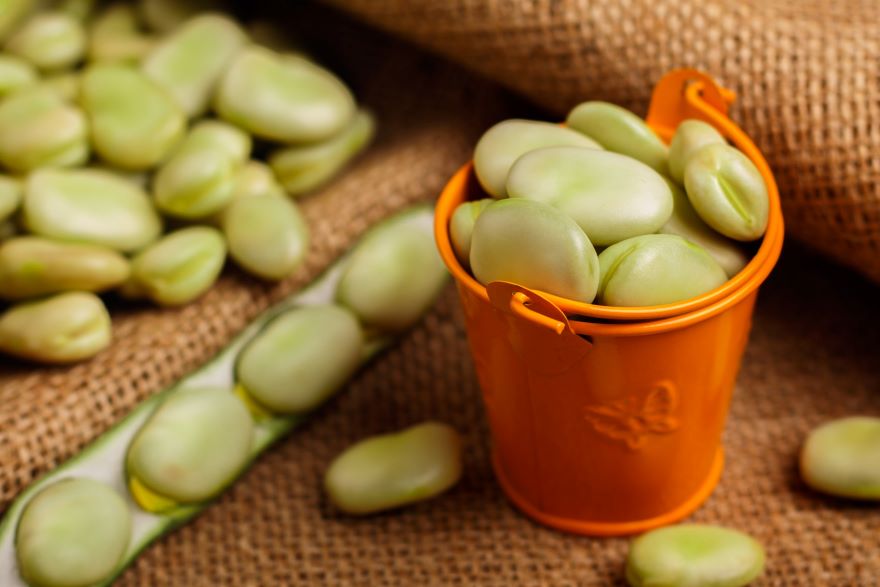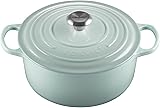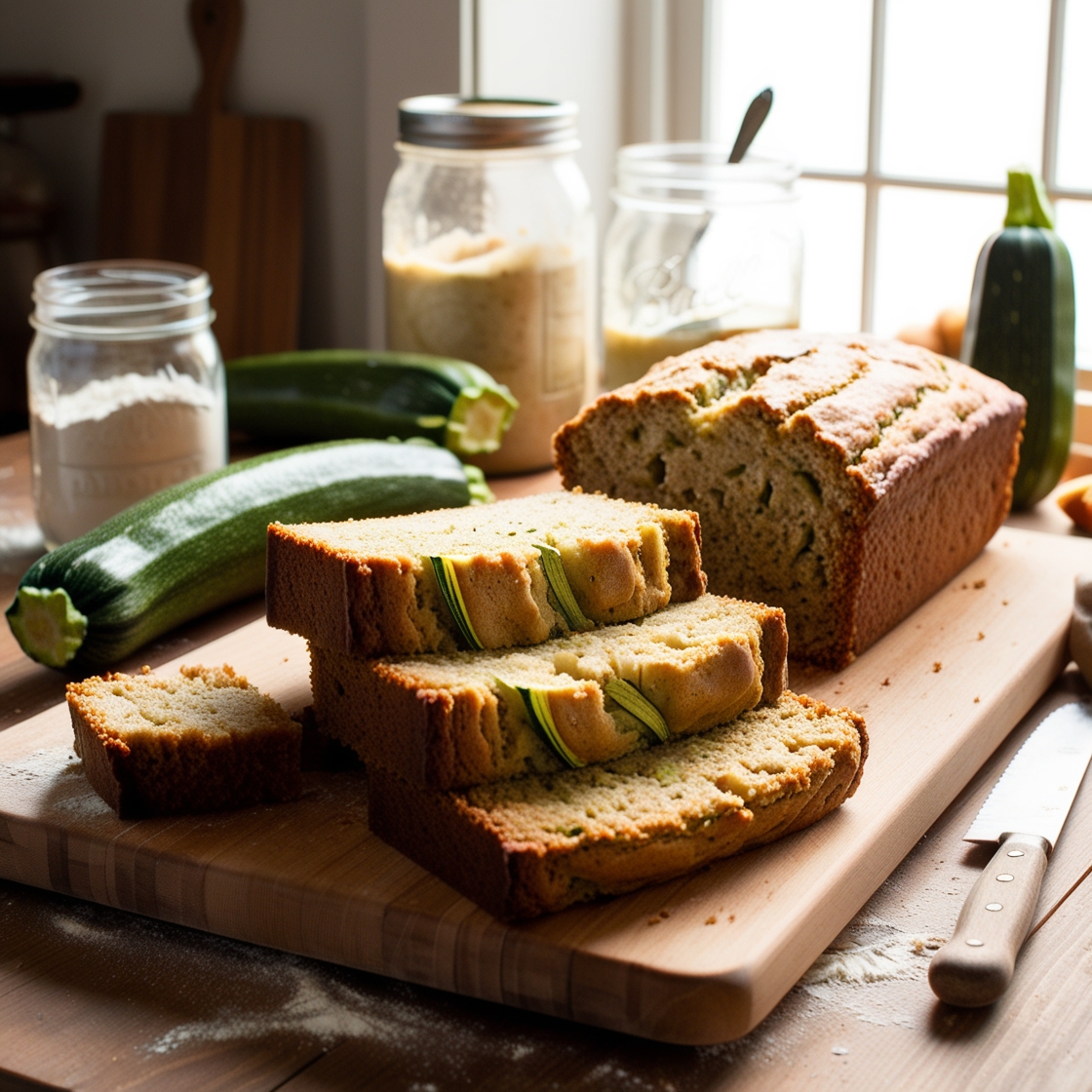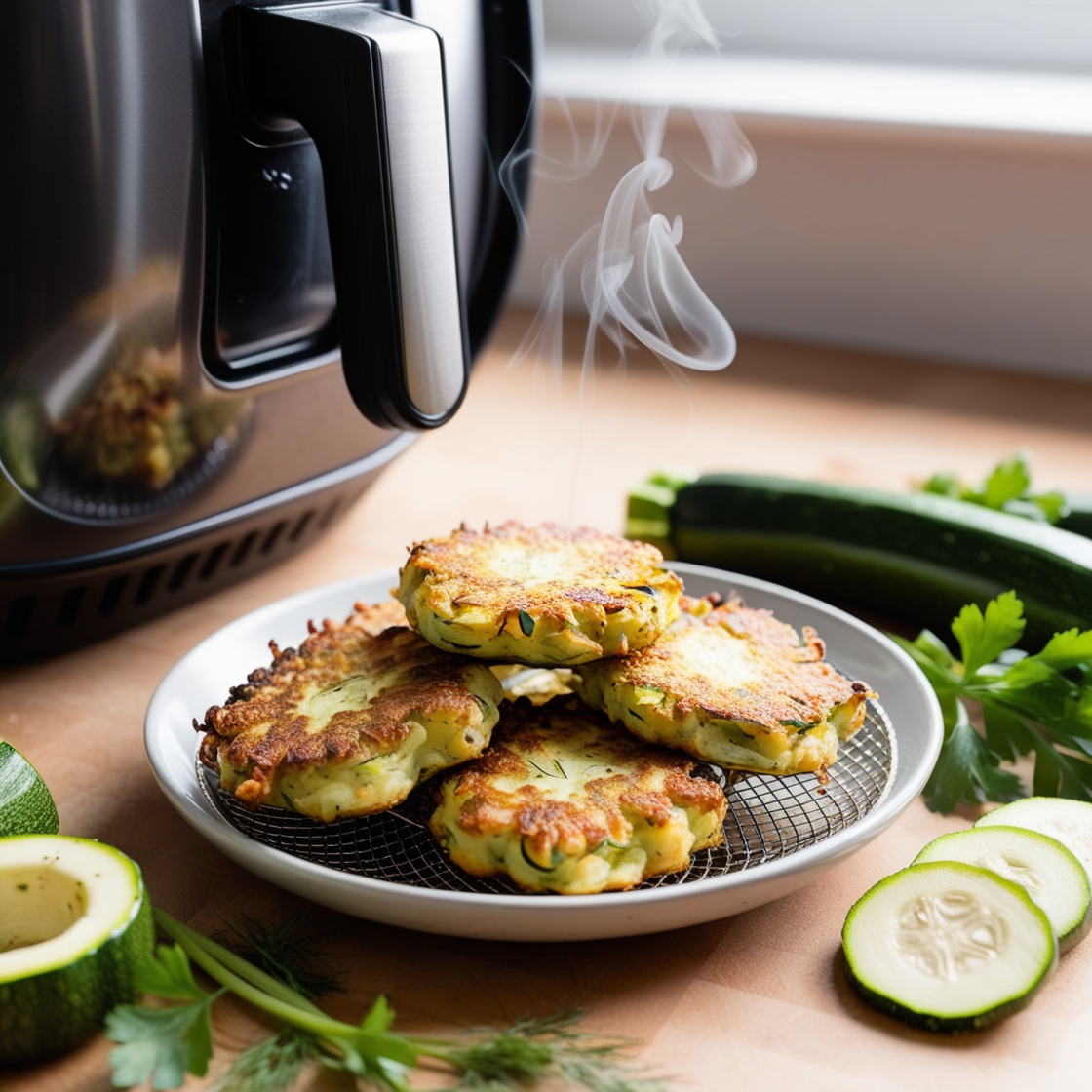I never thought I’d be the person preaching about dried fava beans, but here I am, completely transformed and excited to share my journey with you. It’s been a wild ride, full of surprises, laughter, and yes, a few kitchen disasters. But stick with me, because I promise these little beans are about to change your life too!
My Fava Bean Awakening
Picture this: me, slouched on the couch, surrounded by empty chip bags and soda cans. That was my reality not too long ago. I was tired, cranky, and honestly, feeling pretty hopeless about my health. Then, by some twist of fate (or maybe just a misdirected grocery delivery), a bag of dried fava beans landed on my doorstep.
I stared at that bag for days, unsure what to do with these strange, flat beans. But something inside me whispered, “What have you got to lose?” Little did I know, those beans would be the first step in a journey that would transform not just my diet, but my entire outlook on life.
The Fava Five: Recipes That Changed Everything
1. The “I Can’t Believe It’s Not Junk Food” Fava Bean Chips
This recipe was born out of desperation. Late one night, craving my usual salty snacks, I decided to get creative with my new fava bean stash.
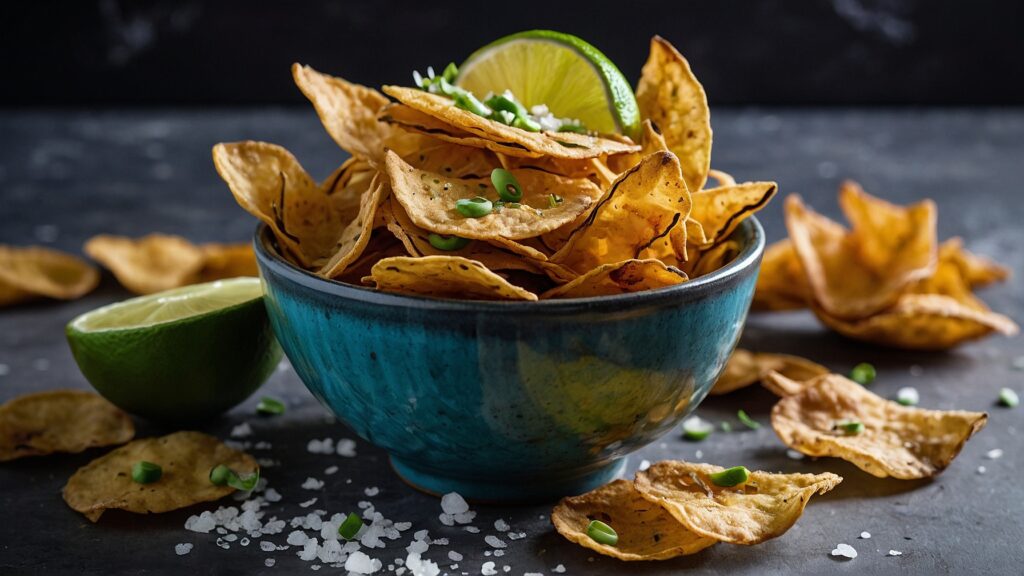
Ingredients:
- 2 cups cooked and peeled fava beans
- 1 tablespoon olive oil
- 1 teaspoon smoked paprika
- 1/2 teaspoon garlic powder
- Salt to taste
I spread the seasoned beans on a baking sheet, popped them in the oven at 375°F (190°C), and crossed my fingers. Thirty minutes later, I was munching on crispy, savory chips that satisfied my junk food cravings without the guilt.
The texture was a revelation – crunchy on the outside, with a satisfying bite that made my taste buds dance. The smoky paprika mingled with the nutty flavor of the fava beans, creating a snack that was both familiar and excitingly new.
The best part? I didn’t feel sluggish or regretful afterward – just happily full and energized. It was my first win, and boy, did I celebrate! I did a little victory dance right there in my kitchen, feeling proud that I’d created something delicious and nutritious.
Reflection question: What’s your go-to snack when cravings hit? How might you transform it into a healthier version?
2. The “Green Goddess” Fava Bean Hummus
After my chip success, I got bold. Why not try a twist on traditional hummus?
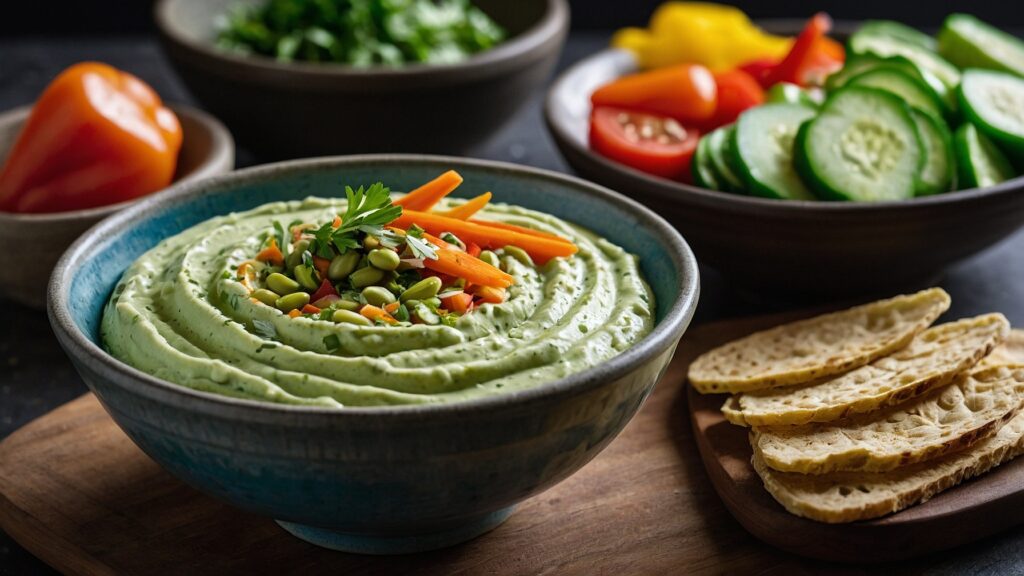
Ingredients:
- 2 cups cooked and peeled fava beans
- 2 tablespoons tahini
- 2 cloves garlic
- Juice of 1 lemon
- 1/4 cup fresh parsley
- 2 tablespoons olive oil
- Salt and pepper to taste
Creating silky smooth fava bean hummus is a breeze with the right equipment. I swear by my Vitamix A3500 for achieving that perfect creamy texture every time. It’s a game-changer for all my fava bean recipes!
- Program Settings: Five program settings (for Smoothies, Hot Soups, Dips & Spreads, Frozen Desserts, and Self-Cleaning) ensure walk-away convenience and consistent results. The A3500 pairs with the Vitamix Perfect Blend App: Unlock the Ascent Series A3500's full potential with 17 programs and 500+ recipes with the iOS + Android app.
- Touchscreen Controls give the machine a sleek silhouette and are easily wiped clean.Electrical Ratings - 120 V, 50-60 Hz, 12 Amps. Cord: 4 feet. HP: 2.2-peak
- You're in Control: Variable Speed Control and Pulse feature let you manually fine-tune the texture of any recipe
- Built-In Wireless Connectivity: The motor base is able to read the container size you’ve chosen and automatically adjust program settings and maximum blending times accordingly. Add a range of compatible container sizes, building a customized blending system designed to fit your needs.
- Programmable Timer: A built-in timer helps avoid over- or under-processing your custom recipes. Set the timer to the length of your blend, and it will turn the machine off automatically. What's in the Box: motor base, low-profile 64 oz. container, low-profile classic tamper, Simply Blending Cookbook
Blending these ingredients created a vibrant green dip that looked as good as it tasted. The aroma of fresh garlic and lemon filled my kitchen, making my mouth water before I’d even taken a bite. The smooth, creamy texture was punctuated by tiny bits of parsley, adding a burst of freshness to each mouthful.
I served it at a family gathering, nervously watching as my notoriously picky relatives took their first bites. To my shock, the bowl was empty within minutes, with requests for the recipe flying. That day, I realized healthy food could be a bridge, not a barrier, to connecting with loved ones.
This recipe became my secret weapon for potlucks and parties. Each time someone raved about it, I felt a little surge of pride. Me, the former junk food addict, was now the one people turned to for healthy, delicious recipes!
Small win celebration: After the success of this recipe, I treated myself to a new set of beautiful serving bowls. Every time I use them, I’m reminded of how far I’ve come.
3. The “Power-Up” Fava Bean Breakfast Bowl
Mornings used to be my nemesis. I’d drag myself out of bed, guzzle coffee, and grab whatever sugary convenience food was nearest. But as my energy levels improved, thanks to my new fava bean habit, I craved a breakfast that would keep that momentum going.
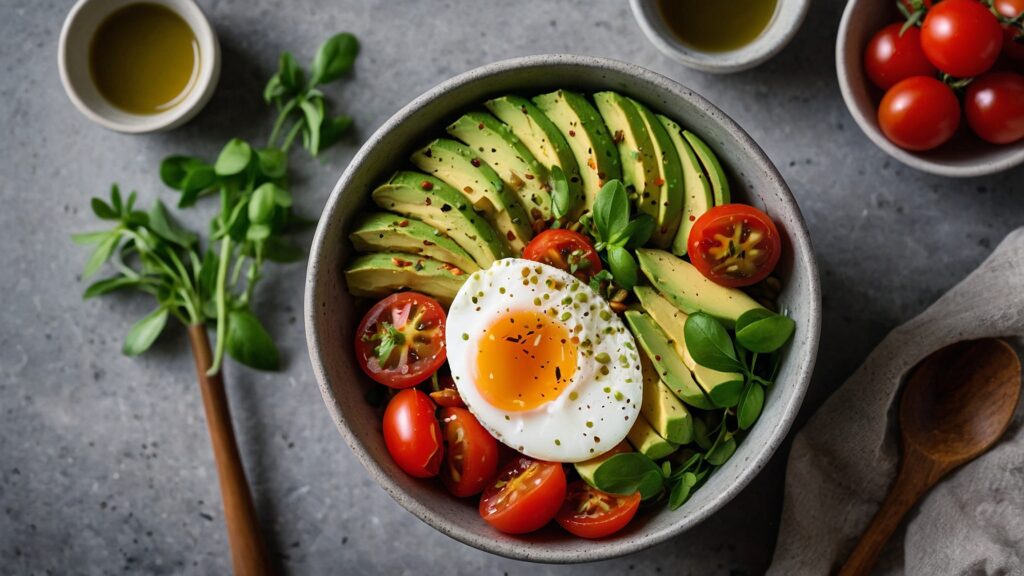
Ingredients:
- 1 cup cooked fava beans
- 1 soft-boiled egg
- 1/4 avocado, sliced
- Handful of cherry tomatoes, halved
- Sprinkle of za’atar seasoning
- Drizzle of extra virgin olive oil
This colorful bowl not only brightened my mornings visually but gave me sustained energy that lasted until lunch. No more mid-morning crash and burn! The creamy avocado, paired with the earthy fava beans and the slight tanginess of the za’atar, created a symphony of flavors that made my taste buds sing.
I started looking forward to waking up, excited about the nourishing meal ahead. This shift in my morning routine had a ripple effect on my entire day. I found myself making healthier choices, having more patience with my coworkers, and even enjoying my evening workouts more.
Challenge for you: Try replacing your usual breakfast with a protein-packed alternative for a week. Notice how it affects your energy levels and mood throughout the day.
4. The “No-Pasta” Fava Bean Lasagna
Want to take your fava bean cooking to the next level? The Breville Joule Sous Vide has revolutionized how I prepare my beans. It ensures they’re perfectly cooked every time, making dishes like my fava bean lasagna even more delicious.
- Smallest, sleekest sous vide tool available at just 11 inches tall and 1.3 pounds, with streamlined white body and solid stainless steel cap & base.
- Saves space: Half the size of other sous vide machines, it's small enough to slip into a top drawer. IEEE 802.11 b/g/n Wi-Fi compatible 2.4 Ghz only
- Heats up fast: 1100 watts of power for hyper-fast water heating. System requirements: iOS 8.0 or later, Android 4.4 or later, internet access required for some features
- Perfect results: Visual Doneness feature in the Joule app displays exactly how food cooks. Dinner comes out predictably perfect, every time. Vessel requirements - Minimum water depth - 1.5 inch (38 millimeter). Maximum water depth - 8 inch (203 millimeter)
- Wifi and bluetooth ready: Works with iPhone or Android. Connect with Bluetooth alone, or cook from anywhere with Wi-Fi. Bluetooth smart 4.0 wireless technology
This recipe was born from a major craving for comfort food. I was stressed, tired, and on the verge of ordering a giant, cheesy lasagna. But I challenged myself: could I create something equally satisfying with fava beans?
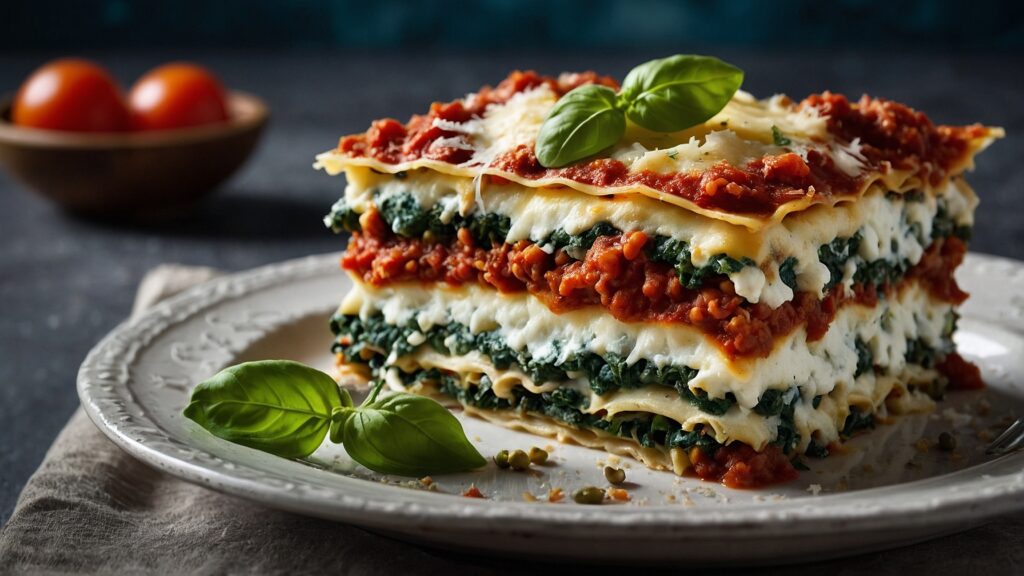
Ingredients:
- 3 cups cooked and mashed fava beans
- 1 cup chopped spinach
- 1 cup low-fat ricotta cheese
- 1 egg
- 1 cup tomato sauce
- 1/2 cup grated Parmesan cheese
- Italian herbs to taste
I layered these ingredients like a traditional lasagna, using the mashed fava beans in place of pasta sheets. As it baked, the aroma of herbs and tomato sauce filled my home, instantly calming my frazzled nerves.
The result? A protein-packed, veggie-loaded dish that hit all the right comfort food notes without the heavy, bloated feeling afterward. The fava bean layers were creamy and satisfying, while the spinach added a pop of color and extra nutrients.
This became my go-to meal for stressful days, reminding me that I could nurture myself without sabotaging my health goals. Each time I made it, I felt like I was giving myself a warm, comforting hug – but one that nourished my body instead of weighing it down.
Reflection question: What’s your ultimate comfort food? How might you reinvent it with healthier ingredients?
5. The “Miracle” Fava Bean Brownies
I know what you’re thinking – beans in brownies? Trust me, I was skeptical too. But after the success of my other recipes, I was ready to push the boundaries.
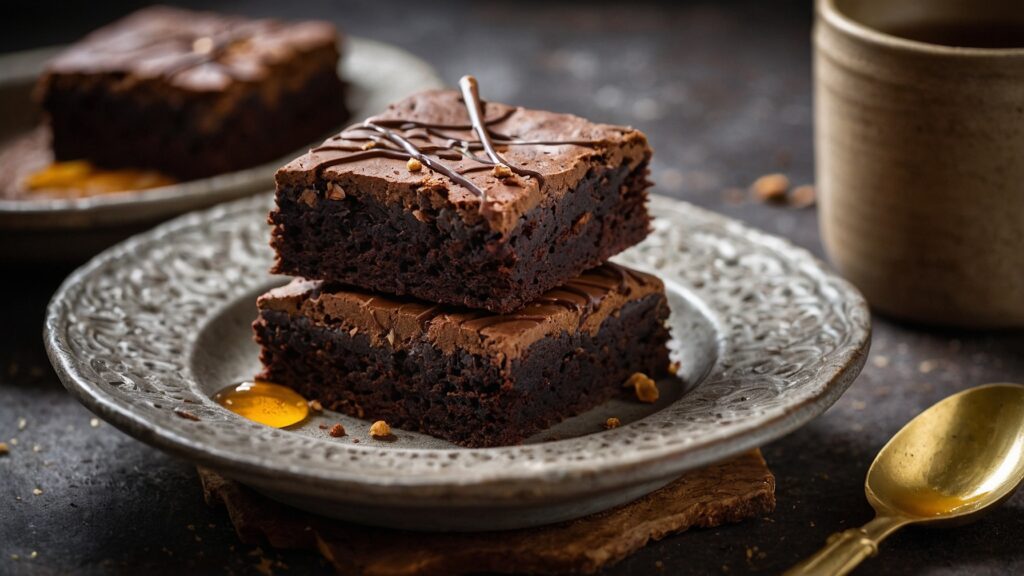
Ingredients:
- 2 cups cooked and pureed fava beans
- 1/4 cup honey
- 1/4 cup coconut oil
- 1/4 cup unsweetened cocoa powder
- 2 eggs
- 1 teaspoon vanilla extract
- 1/4 cup almond flour
- 1/2 teaspoon baking powder
I held my breath as I pulled these from the oven, half-expecting a disaster. Instead, I was met with the rich aroma of chocolate and a tray of moist, fudgy brownies. The texture was incredible – dense and chocolatey, with no hint of the secret ingredient.
I served them to friends without mentioning the fava beans, and watched in amazement as they devoured them, praising their texture and flavor. Revealing the fava bean base led to dropped jaws and requests for the recipe. That day, I truly felt like a healthy- eating magician.
This recipe became my ace in the hole for satisfying sweet cravings without derailing my health journey. It was proof that with a little creativity, I could have my cake (or brownie) and eat it too!
Small win celebration: After perfecting this recipe, I bought myself a beautiful new recipe journal to record all my healthy creations. It sits proudly on my kitchen counter, a tangible reminder of my journey.
The Ripple Effect
As these recipes became staples in my life, I noticed changes beyond just my waistline. My energy soared, my mood stabilized, and I found myself excited about cooking and sharing meals with others. Friends and family, initially skeptical of my “bean obsession,” started asking for advice and recipes.
Investing in quality cookware has made my fava bean journey even more enjoyable. My Le Creuset Dutch Oven is perfect for slow-cooking fava beans to tender perfection. It’s become an indispensable tool in my kitchen transformation.
- Enameled cast iron delivers superior heat distribution and retention
- Ready to use, requires no seasoning
- Easy-to-clean and durable enamel resists dulling, staining, chipping and cracking
- Light colored smooth interior enamel allows easy monitoring of cooking progress
- Tight-fitting lids are specially designed to circulate steam and return moisture back to the food
But it wasn’t always smooth sailing. There were nights I craved my old comfort foods, days when meal prep felt overwhelming, and moments of doubt about whether I could stick to this new lifestyle. What kept me going was remembering how far I’d come and how much better I felt.
I started a small journal to track my progress. Each week, I’d note one thing I was proud of accomplishing. Some weeks it was trying a new recipe, other times it was resisting the urge to order takeout. These small celebrations kept me motivated and helped me see the bigger picture of my transformation.
Sustainability and Your Fava Bean Journey
One unexpected benefit of my fava bean journey was its positive impact on sustainability. Beans, including fava beans, are incredibly environmentally friendly. They require less water to grow than many other protein sources and even help improve soil health.
By incorporating more fava beans into my diet, I realized I was not only nourishing my body but also making choices that were better for the planet. It became another source of motivation – every time I chose fava beans over less sustainable options, I felt like I was casting a vote for the kind of world I wanted to live in.
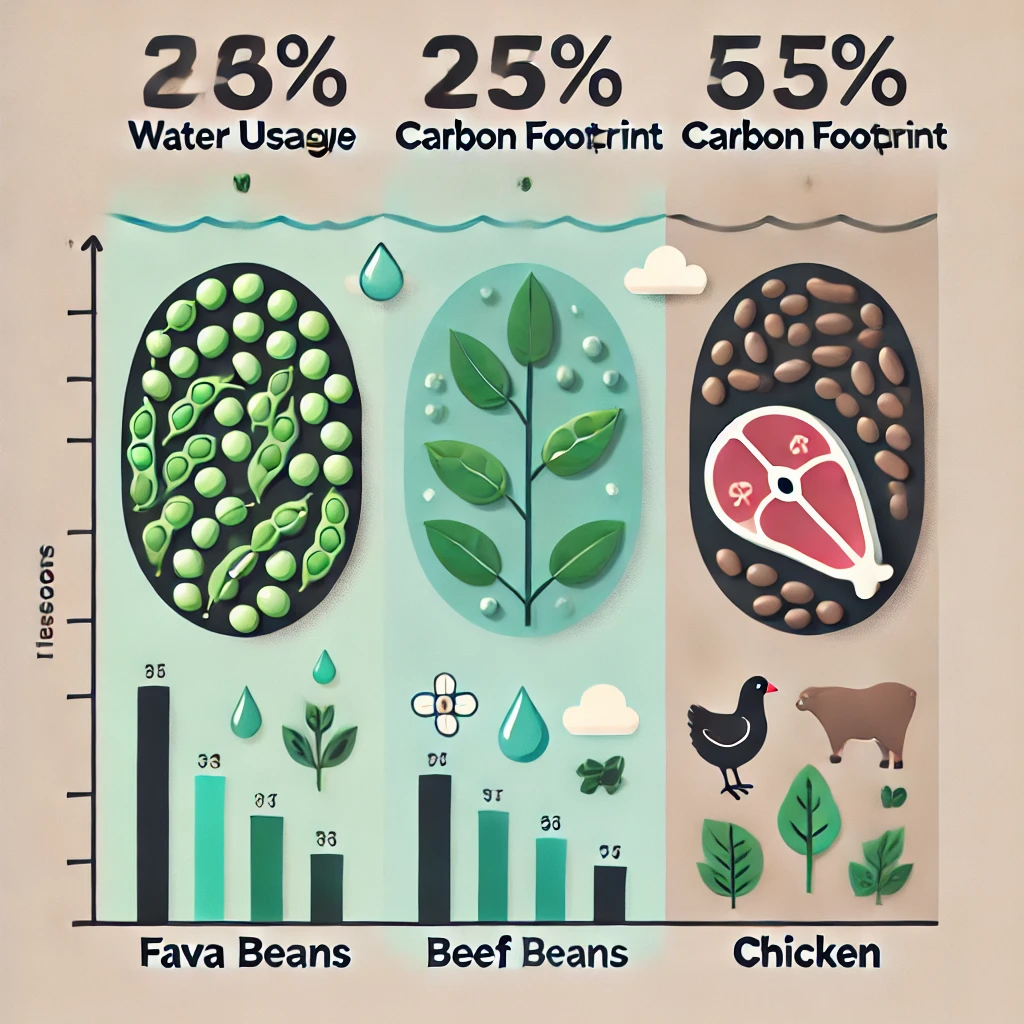
Challenge for you: Research the environmental impact of one of your favorite foods. Can you find a more sustainable alternative to try this week?
Connecting with Fellow Bean Enthusiasts
As my passion for fava beans grew, I yearned to connect with others on similar journeys. I started a small social media account to share my recipes and discoveries. To my surprise, a community began to form. We shared tips, celebrated victories (big and small), and supported each other through challenges.
I also discovered local cooking classes focused on plant-based proteins. Attending these not only expanded my culinary skills but also introduced me to a network of health-conscious individuals in my area. These connections have been invaluable, providing support, inspiration, and friendship along my journey.
Reflection question: How might connecting with others support your health goals? What’s one step you could take to find or create a supportive community?
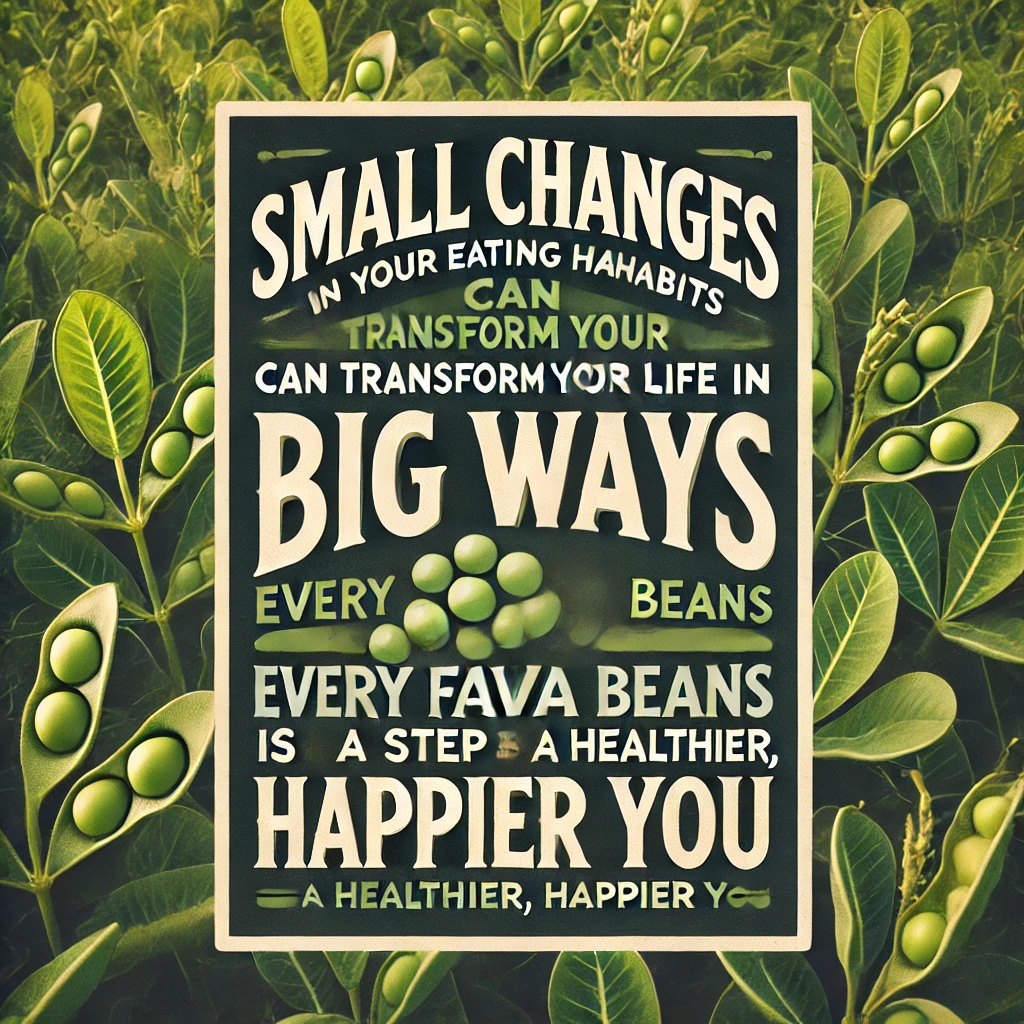
Your Turn: Embracing the Bean Revolution
If you’re reading this and feeling inspired but also a bit intimidated, I get it. Change is scary, and the thought of overhaling your diet can seem overwhelming. But here’s what I want you to know: every journey starts with a single step – or in this case, a single bean.
Start small. Maybe try the fava bean chips next time you’re craving a salty snack. Or whip up a batch of the hummus for your next gathering. Pay attention to how these foods make you feel – not just in the moment, but hours later.
Remember, this isn’t about perfection. It’s about progress. There will be recipes that don’t turn out quite right, days when you fall back on old habits. That’s okay. What matters is that you keep trying, keep experimenting, and keep listening to your body.
Challenge for you: This week, try incorporating fava beans into one meal. It could be one of the recipes I’ve shared or your own creation. Notice how it makes you feel physically and emotionally.
A Bean-Filled Future
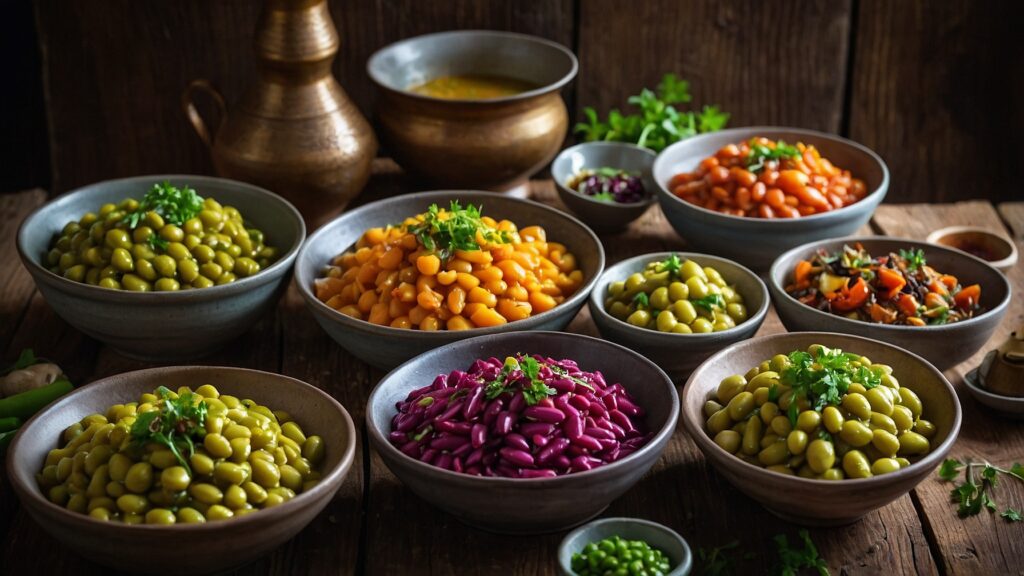
Looking back, I’m amazed at how a simple bag of dried fava beans changed the course of my life. It wasn’t just about the nutrients or the recipes – it was about discovering a newfound love for nourishing my body and the joy of sharing that discovery with others.
So, my friend, are you ready to join the fava bean revolution? Trust me, if this former junk food junkie can do it, so can you. Grab that bag of beans, head to the kitchen, and let’s start this delicious, healthy adventure together. Your taste buds – and your body – will thank you!
Your Next Steps
- Try one of the recipes shared in this post. Start with whichever one appeals to you most!
- Share your experience on social media using #FavaBeanRevolution. I’d love to see your creations!
- Join our Facebook page “My Nutrition Foods” to connect with others on similar journeys, share recipes, and get support.
- Sign up for my newsletter for more recipes, tips, and inspiration on your health journey.
Remember, every small step counts. Your journey to better health starts now, one fava bean at a time. Let’s do this together!
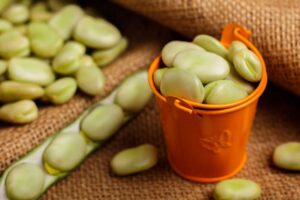
*We may earn a commission for purchases made using our links. Please see our disclosure to learn more.

